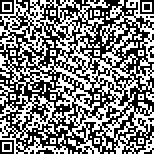| 摘要: |
| [摘要] 目的 探讨新生儿早发型和晚发型败血症的病原菌种类及药敏试验情况,以指导临床合理使用抗生素,降低耐药菌的产生。方法 收集新生儿病房收治血培养阳性的新生儿败血症48例,按发病时间分为早发型败血症和晚发型败血症,对其病原菌、药敏等临床资料进行回顾性分析。结果 早发型败血症以早产儿为主,致病菌以克雷伯杆菌、大肠埃希菌等革兰氏阴性菌占优势;晚发型败血症以足月儿为主,致病菌以葡萄球菌革兰氏阳性菌占优势。早发型败血症和晚发型败血症的胎龄与检出的革兰氏细菌比较差异有统计学意义(P<0.05)。药物敏感性以万古霉素、美罗培南、左氧氟沙星、泰能最为敏感。结论 新生儿败血症应根据其发病类型、血培养及药敏结果选用合适的抗菌药物,以减少耐药菌株产生,提高治疗效果。 |
| 关键词: 新生儿 败血症 病原菌 药物敏感试验 |
| DOI:10.3969/j.issn.1674-3806.2011.09.14 |
| 分类号:R 722.13 |
| 基金项目: |
|
| Analysis of pathogens and their drug sensitivities in early-onset neonatal septicemia and late-onset neonatal septicemia |
|
MENG Dan-hua,WEI Qiu-fen
|
|
Department of Neonatology,Guangxi Women and Children Health Hospital, Nanning 530003,China
|
| Abstract: |
| [Abstract] Objective To study the pathogens and their drug sensitivities of early-onset neonatal septicemia and late-onset neonatal septicemia, to direct the clinical usage of antibiotics and reduce the produce of drug-resistant bacteria. Methods A retrospective analysis was conducted on 48 cases of neonatal septicemia with positive blood culture who were admitted to the neonatal section of our hospital. The study was carried out to analyze the blood culture results and their drug sensitivities. The cases were assigned into two categories, early-onset neonatal septicemia and late-onset neonatal septicemia according to the time of onset of septicemia. Results Early-onset neonatal septicemia mainly happened in premature neonates,while late-onset neonatal septicemia mainly happened in full term neonates. The bacteria in the early-onset neonatal septicemia group were mainly gram-negative bacillus (escherichia coli, klebsiella pneumoniae, and so on), and the pathogens in the late-onset neonatal septicemia group primarily consisted of gram-positive bacillus. Between the early-onset neonatal septicemia group and the late-onset neonatal septicemia group, there were significant statistical differences in gestational age and pathogens (P<0.05). The pathogens were highly sensitive to vancomycin, meropenem, levofloxacin, tienam. Conclusion The reasonable choice of antibiotics in treatment of neonatal septicemia should be based on the disease, pathogenic bacteria and results of drug susceptibility. It can reduce the growth of drug-resistant bacteria and improve clinical treatment effects. |
| Key words: Neonate Septicemia Pathogen Drug sensitive test |

